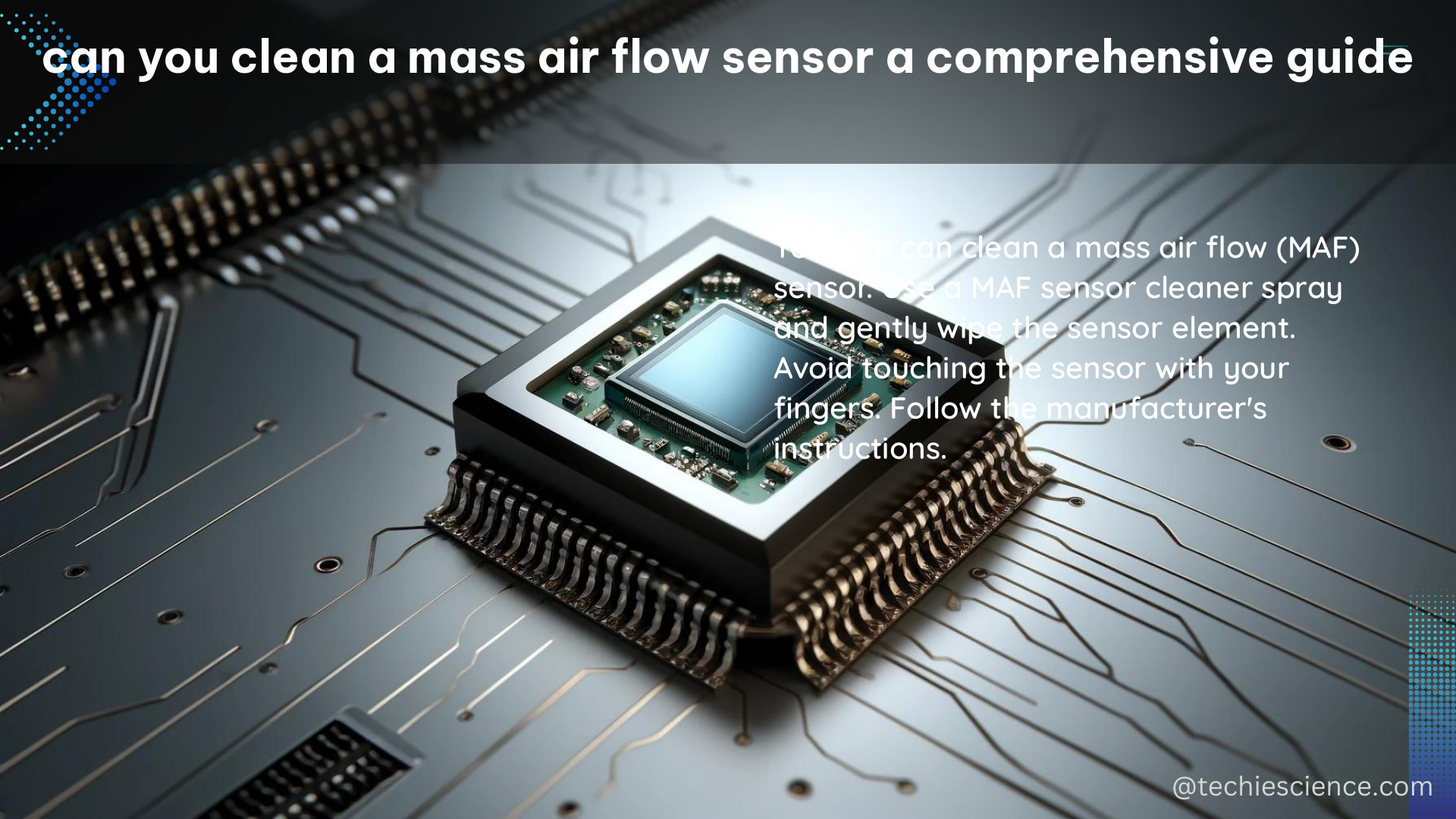The mass air flow (MAF) sensor is a critical component in the engine management system of modern vehicles. It measures the amount of air flowing into the engine, which is essential for the engine control unit (ECU) to determine the correct fuel injection and ignition timing. Keeping the MAF sensor clean is crucial for maintaining optimal engine performance and fuel efficiency. In this comprehensive guide, we will explore the step-by-step process of cleaning a MAF sensor, along with detailed technical specifications and data points to ensure a thorough understanding of the task.
Locating the MAF Sensor
The MAF sensor is typically located near the air filter box, as it needs to measure the incoming air flow before it enters the engine. It is usually mounted in the air intake system, either directly in the air duct or in a separate housing. The exact location may vary depending on the make, model, and year of the vehicle, so it’s essential to consult the service manual or refer to the vehicle’s specific instructions.
Disconnecting the Electrical Connector

Before removing the MAF sensor, you must disconnect the electrical connector that attaches to the sensor. This connector provides the power and signal communication between the sensor and the ECU. The connector is usually secured with a tab or latch that needs to be pressed or released to disconnect it. Be gentle and avoid applying excessive force, as the connector can be delicate and easily damaged.
Removing the MAF Sensor
The MAF sensor is typically held in place by a couple of screws or bolts. Using the appropriate tools, carefully remove these fasteners and then gently pull the sensor out of its housing. Take note of the sensor’s orientation and position, as it will need to be reinstalled in the same way.
Cleaning the MAF Sensor
To clean the MAF sensor, you must use a specialized MAF sensor cleaner. These cleaners are designed to safely remove any buildup or contaminants on the sensor’s delicate components without causing damage. Avoid using any other type of cleaner, as they may contain solvents or chemicals that could harm the sensor.
- Spray the Cleaner: Liberally spray the MAF sensor cleaner onto the sensor, ensuring that all surfaces are covered.
- Gently Scrub: Use a soft-bristled brush to gently scrub the sensor, paying close attention to the sensing element and the electrical contacts.
- Dry Thoroughly: Allow the sensor to dry completely before reinstalling it. You can use compressed air to help speed up the drying process.
Reinstalling the MAF Sensor
Once the sensor is clean and dry, carefully reinstall it in its original position and orientation. Secure the sensor with the screws or bolts, taking care not to overtighten them. Reconnect the electrical connector, ensuring that it clicks into place securely.
Technical Specifications and Data Points
When cleaning a MAF sensor, it’s essential to be aware of the following technical specifications and data points:
| Specification | Range |
|---|---|
| Resistance Range | 2 to 5 kilohms |
| Voltage Range | 4.5 to 5 volts |
| Temperature Range | -40 to 150 degrees Celsius |
| Flow Range | 0 to 500 grams per second |
These values can vary depending on the specific make and model of the vehicle, so it’s crucial to refer to the manufacturer’s recommendations or the vehicle’s service manual for the exact specifications.
Conclusion
Cleaning a MAF sensor is a straightforward task that can have a significant impact on your vehicle’s performance and fuel efficiency. By following the step-by-step process outlined in this comprehensive guide and adhering to the technical specifications, you can ensure that your MAF sensor is functioning at its best. Remember to always use the recommended MAF sensor cleaner and follow the manufacturer’s instructions to avoid any potential damage to the sensor or the engine management system.
References
- Engineering Services Guide | NSW Health
- 40 CFR Part 53 — Ambient Air Monitoring Reference and Equivalent Methods
- Guide to achieving reliable quantitative LC-MS measurements
- CONTROL VALVE HANDBOOK | Emerson
- GSFC-STD-7000A – Explorer – NASA

The lambdageeks.com Core SME Team is a group of experienced subject matter experts from diverse scientific and technical fields including Physics, Chemistry, Technology,Electronics & Electrical Engineering, Automotive, Mechanical Engineering. Our team collaborates to create high-quality, well-researched articles on a wide range of science and technology topics for the lambdageeks.com website.
All Our Senior SME are having more than 7 Years of experience in the respective fields . They are either Working Industry Professionals or assocaited With different Universities. Refer Our Authors Page to get to know About our Core SMEs.